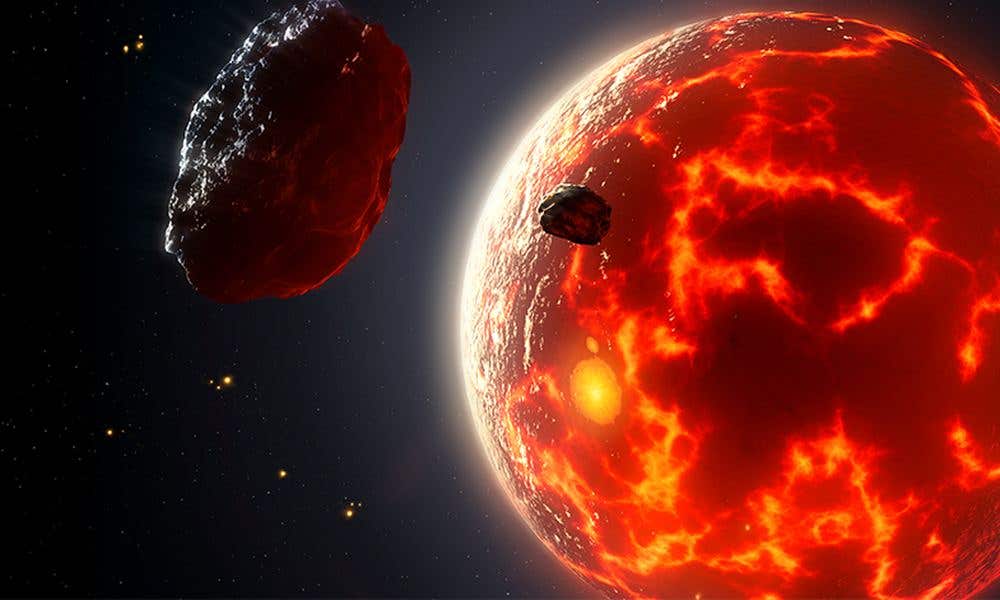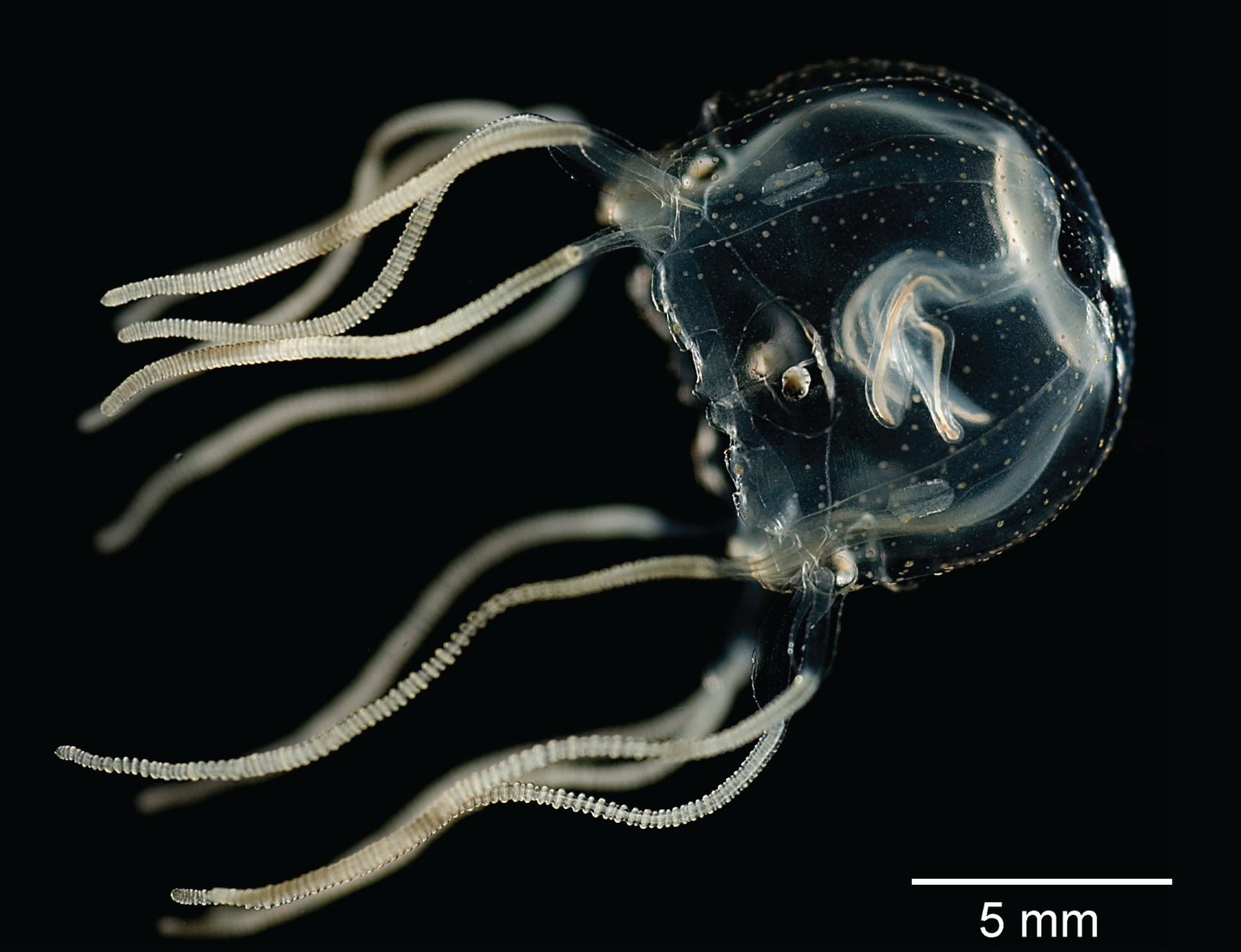Oceans in the fire: How magma and hydrogen forge massive quantities of planetary water
Scientists reveal that magma and hydrogen can create water deep inside planets, reshaping our search for habitable worlds.

 Edited By: Joshua Shavit
Edited By: Joshua Shavit

New research shows that hydrogen interacting with molten rock inside young planets can create vast amounts of water. (CREDIT: Shutterstock)
In the beginning, when planets were newborn, they glowed like furnaces, vast oceans of molten rock wrapped in heavy blankets of gas. For a long time, scientists believed those fiery worlds were too violent for something as life-giving as water to appear. But new research challenges that idea, revealing that even inside the chaos of a planet’s early years, water can quietly take shape.
Led by Francesca Miozzi and Anat Shahar of the Carnegie Institution for Science, a team of researchers has shown that the most common planets in our galaxy, known as Sub-Neptunes, could generate enormous quantities of water deep within their interiors. Their findings suggest that hydrogen, the simplest element in the universe, may be the hidden architect of planetary water.
A New Source of Life’s Ingredient
More than 6,000 exoplanets have been found orbiting distant stars, and many fall into the Sub-Neptune category. These worlds are smaller than Neptune but larger than Earth, with rocky cores encased in thick, hydrogen-rich atmospheres. Until now, their mysterious interiors could only be imagined through computer models.
“Our rapidly increasing knowledge about the vast diversity of exoplanets has enabled us to envision new details about the earliest stages of rocky planet formation and evolution,” Miozzi said. “This opened the door to considering a new source for planetary water supplies, a long-debated mystery among Earth and planetary scientists, but experiments designed with this purpose in mind were absent.”
Working with collaborators from UCLA and the Institut de Physique du Globe de Paris, the team set out to mimic the extreme conditions inside these young worlds. Using a diamond anvil cell, one of the few instruments capable of reproducing planetary pressures, they squeezed samples of iron-rich silicate rock to nearly 600,000 times Earth’s atmospheric pressure and heated them above 4,000 degrees Celsius.
Inside this miniature planet, hydrogen gas interacted with molten rock, creating a reaction that produced water. For the first time, scientists could see proof that magma and hydrogen can chemically combine to make water, not just absorb it.
Forging Water from Fire
The experiments recreated what happens as new planets grow from swirling disks of gas and dust. In their infancy, these bodies collide, heat up, and melt into global magma oceans surrounded by thick hydrogen atmospheres. Hydrogen acts like an insulating blanket, slowing the planet’s cooling and extending the molten stage for millions of years.
Within that fiery mix, the researchers discovered two crucial chemical processes. First, molecular hydrogen dissolved into the molten rock, becoming part of the magma itself. Second, that hydrogen reacted with iron oxide—one of the most common minerals in silicate rock—producing metallic iron and water.
“Our work provided the first experimental evidence of two critical processes from early planetary evolution,” Miozzi explained. “We showed that a copious amount of hydrogen is dissolved into the melt and significant quantities of water are created by iron-oxide reduction by molecular hydrogen.”
When the samples cooled, scientists found traces of that water trapped inside: hydrogen-rich droplets, metallic inclusions, and tiny empty cavities where steam had once escaped. It was clear that water had formed deep within the rock, not from outside sources like icy comets but as a natural consequence of a planet’s own chemistry.
Blurring the Line Between Rock and Sky
As the pressure increased beyond 45 gigapascals, the team noticed something remarkable. The hydrogen-rich fluid and the molten silicate stopped behaving as separate materials, they blended into one continuous phase. That means some planets might not have a distinct rocky mantle and gaseous atmosphere at all. Instead, their interiors could be vast oceans of mixed rock, metal, and vapor.
Anat Shahar, who leads the multi-institutional AEThER project that funded the study, said the discovery could transform how scientists think about planet formation. “The presence of liquid water is considered critical for planetary habitability,” she said. “This work demonstrates that large quantities of water are created as a natural consequence of planet formation. It represents a major step forward in how we think about the search for distant worlds capable of hosting life.”
If such mixing truly happens inside Sub-Neptunes, then hydrogen and water could be intertwined in ways never seen on Earth. These planets might possess layers where the atmosphere merges seamlessly into molten rock, forming a supercritical fluid that blurs the line between surface and sky.
A Hidden Ocean Beneath the Heat
For anyone looking up at the night sky, the idea that water might form in the middle of a magma ocean feels almost poetic. It suggests that even within chaos and fire, nature finds ways to build the conditions for life.
In laboratory snapshots taken after each run, the researchers could see the chemical fingerprints of that process. The molten rock had absorbed hydrogen equal to roughly five or six percent of its weight—equivalent to several oceans’ worth of water if scaled to a whole planet. Even the solidified crystals held small amounts, hinting that once a planet begins to cool, some of this internal water could rise toward the surface.
Over time, that movement might reshape a planet’s geology, atmosphere, and even its potential for life. The metallic iron formed during the reaction could sink to the core, helping generate magnetic fields that protect a planet from solar radiation. Meanwhile, the water could cycle upward, possibly escaping through volcanic activity or forming oceans if the surface eventually cools enough.
These processes might not be unique to Sub-Neptunes. Any planet large enough to hold a hydrogen envelope—roughly a quarter the mass of Earth or more, could experience the same internal chemistry. That means hydrogen-driven water formation could be a universal rule of planet building, not an exception.
Practical Implications of the Research
The discovery redefines what it means for a planet to be “habitable.” Water may not always come from distant comets or icy collisions but could be forged from the planet’s own molten heart. For scientists searching for life beyond Earth, that changes everything. Worlds once dismissed as too hot or too exotic might harbor hidden oceans beneath their clouds.
This insight also reshapes models of how planetary cores and mantles form. Knowing that hydrogen can dissolve deeply into magma helps explain variations in density and composition seen across different planets. It may even influence the hunt for exoplanets with magnetic fields, weather systems, or surface conditions resembling our own.
Ultimately, the research shows that water, life’s most vital ingredient, may arise anywhere hydrogen and rock meet under the right conditions. For a galaxy filled with Sub-Neptunes, that means the spark of habitability could be far more common than anyone imagined.
Research findings are available online in the journal Nature.
Related Stories
- Moon dust from Chang’e-6 mission reveals asteroids carried water to Earth
- Astronomers confirm the presence of water on interstellar comet 3I/ATLAS
- Venus's clouds contain massive reservoirs of water and iron
Like these kind of feel good stories? Get The Brighter Side of News' newsletter.
Joseph Shavit
Science News Writer, Editor-At-Large and Publisher
Joseph Shavit, based in Los Angeles, is a seasoned science journalist, editor and co-founder of The Brighter Side of News, where he transforms complex discoveries into clear, engaging stories for general readers. With experience at major media groups like Times Mirror and Tribune, he writes with both authority and curiosity. His work spans astronomy, physics, quantum mechanics, climate change, artificial intelligence, health, and medicine. Known for linking breakthroughs to real-world markets, he highlights how research transitions into products and industries that shape daily life.



